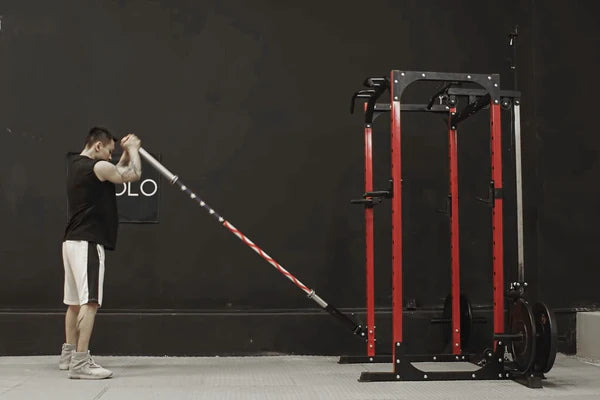When it comes to maintaining healthy shoulders, few movements are as simple yet effective as the classic shoulder roll. Whether you're an office worker hunched over a desk or an athlete grinding out reps in the gym, incorporating shoulder rolls into your routine can improve posture, reduce tension, and enhance mobility.
What Are Shoulder Rolls?
Shoulder rolls are a gentle, controlled movement where the shoulders are slowly rotated in a circular motion—either forward or backward. They can be done seated or standing and are often used as a warm-up or cooldown exercise. The motion encourages joint lubrication, muscle activation, and increased circulation around the shoulder girdle.
There are two main variations:
-
Forward shoulder rolls: where you roll your shoulders up, forward, down, and back in a circular motion.
-
Backward shoulder rolls: the opposite direction—rolling up, back, down, and forward.
Both help restore natural alignment, especially for people prone to rounded shoulders or tight traps.
How to Do Shoulder Rolls (Proper Form)
To get the most out of shoulder rolls, precision is key. Here’s a step-by-step breakdown:
-
Stand or sit upright with your back straight and arms relaxed by your sides.
-
Inhale and lift both shoulders toward your ears.
-
Roll your shoulders forward in a smooth circular motion—down, then back to the starting point.
-
Repeat for 10–15 reps.
-
Reverse the direction for backward rolls, keeping the same pace and control.
For seated shoulder rolls, follow the same cues while sitting tall, with feet planted firmly on the ground. This variation is perfect for desk workers or those with mobility challenges.
Muscles Worked During Shoulder Rolls
While shoulder rolls may appear low-impact, they activate several important muscles:
-
Trapezius (upper, middle)
-
Deltoids (anterior and lateral)
-
Rhomboids
-
Levator scapulae
-
Rotator cuff stabilizers
This makes them especially effective as part of a warm-up or shoulder roll workout, prepping the body for heavier lifts or sports.
Benefits of Shoulder Rolling
Adding shoulder rolls to your daily routine can bring a range of benefits:
-
Improved posture: Rolling the shoulders counteracts slouched positions and tight pecs.
-
Reduced tension: Releases knots and stiffness in the upper back and neck.
-
Better joint mobility: Especially beneficial for those who feel restricted when lifting or reaching overhead.
-
Stress relief: The motion encourages slow, deep breathing which helps calm the nervous system.
-
Injury prevention: Warmed-up, mobile shoulders are less likely to experience strain during workouts or daily activities.
If you're asking, “What are the benefits of shoulder rolls?”, the real question is—why aren’t you doing them already?
My Personal Experience
Years ago, after a shoulder impingement slowed down my training, I turned to shoulder rolls during recovery. Initially, I underestimated them. But over weeks of consistent practice—especially rolling shoulders forward and backward between heavier sets—I noticed improved range of motion, less tightness, and a surprising return of strength.
Today, shoulder rolls are a mainstay in both my warm-up and cooldown. Whether it’s a full upper-body session or just a mobility day, I always take a few minutes to roll my shoulders, and my joints thank me for it.
Pro Tips for Shoulder Roll Success
-
Add resistance: Use light dumbbells or resistance bands for an advanced variation.
-
Combine with stretches: Pair with a doorway chest stretch or neck rolls for a complete upper-body release.
-
Stay consistent: Just 2–3 minutes a day can create noticeable improvements over time.
-
Listen to your body: If you feel pain (not to be confused with muscle fatigue or stretch), stop and reassess your form.
Shoulder Rolls: Small Move, Big Impact
Don’t let their simplicity fool you. Whether you’re loosening up before a workout, stretching out tight muscles, or just looking for better posture, shoulder roll exercises are a foundational tool. With minimal effort, you can unlock freer movement, less pain, and stronger shoulders—all from a motion as basic as rolling your shoulders.












































Leave a comment
This site is protected by hCaptcha and the hCaptcha Privacy Policy and Terms of Service apply.